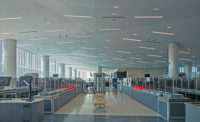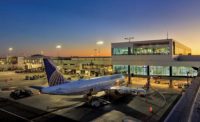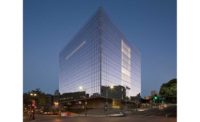United Airlines Field at Los Angeles Memorial Coliseum
Los Angeles
Best Project
Owner: University of Southern California
Lead Design Firm: DLR Group
General Contractor: AECOM Hunt, a Joint Venture With Hathaway Dinwiddie Construction Co.
Civil Engineer: KPFF
Structural Engineer: Nabih Youssef & Associates
MEP Engineer: ARUP
To renovate and expand one of the world’s oldest and most recognizable sports venues, the design and construction team carefully balanced Memorial Coliseum’s storied 94-year history with a need to provide more modern facilities. The $245-million, 231,340-sq-ft historic renovation and expansion included a new south tower of suites, clubs, concessions, a press box and an outdoor roof deck with views of the stadium and Los Angeles.
To construct the new seven-story tower, which includes a basement level, crews excavated below the existing 1926 foundations as well as seismic retrofits from 1994. The completed tower affected less than 15% of the existing seating in order to create premium seating.
Among the many preservation efforts, crews restored the signature column, archway, travertine limestone tiles and decorative mural that make up the arena’s iconic peristyle entrance. The existing exterior stadium facade and the upper bowl’s cast-in-place concrete stairs also had to be protected. The team engineered unique shoring solutions to maintain historic elements and allow access to the main concourse areas from outside the stadium.
Meanwhile, the venue remained open during construction for the 2018-2019 football season, including University of Southern California and Los Angeles Rams games. Crews reduced the footprint before each game by relocating temporary fencing, tools and materials to create adequate pedestrian circulation. Forty-eight hours before game day, the main delivery receiving area was sectioned off to accommodate broadcast TV trucks. Deliveries were carefully planned, as that receiving area was also the construction team’s main delivery point.
The completed project provided all new seats with increased legroom; improved the concourses; upgraded audio, video and Wi-Fi; and replaced MEP systems to meet current standards. The changes made to improve the fan experience reduced the capacity of the facility to 78,000 from 93,000.
The project was completed on budget and on time for the start of the Rams’ 2019-2020 preseason football games.





